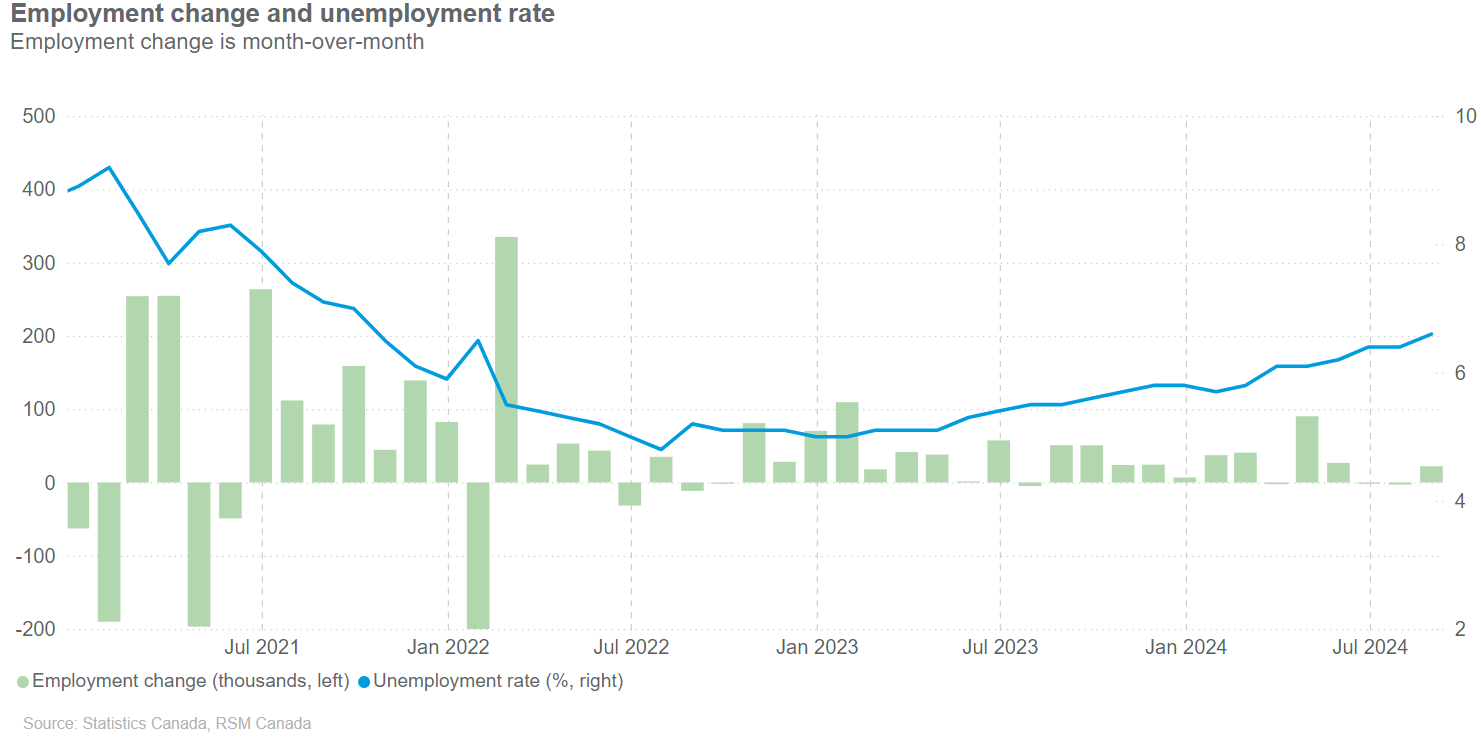The data in Canada’s labour survey for August paints a picture of a cooling job market as the economy added a mere 22,000 jobs and the unemployment rate rose to 6.6 per cent. The employment rate rose 0.1 percentage points to 60.8 per cent.
More rate cuts are needed, and it will take time for the recent rate cuts to have an impact on hiring.
But make no mistake: As interest rates fall and the cost of money goes down, businesses will start hiring and investing again. Canada will see an uptick in hiring at the start of next year.
For this to happen, the Bank of Canada will need to keep cutting its policy rate.
Even though the August jobs report showed a modest jobs gain, the increases were entirely among part-time positions as the economy lost 44,000 full-time jobs. Those losses were offset by a gain of 66,000 part-time jobs.
Industries that added jobs, such as education (27,000) and health care and social assistance (25,000), are acyclical and less sensitive to the macroeconomic environment.
At the same time, professional, scientific and technical services lost 16,000 jobs, while utilities lost 6,800 and natural resources lost 6,500.
The job market is particularly challenging for youths, as the unemployment rate for returning students hit 16.7 per cent, the highest in over a decade this summer, excluding summer 2020.
Read more of RSM Canada’s insights on the the economy and the middle market.
On a year-over-year basis, only core-aged workers, or those 25 to 54 years old, have seen job growth, while youth and those 55 and over had virtually no employment growth.
Although wage growth remains at 5 per cent, it will most likely fall as the labour supply outstrips labour demand.
Recent restrictions on temporary residents, including both temporary workers and international students, might also limit workforce growth, and the unemployment rate.
This group, together with younger workers, also tends to have a higher unemployment rate, so the restrictions might mean workers already in Canada would have an easier time finding work once hiring starts again.
The takeaway
August’s lukewarm job report suggests more rate cuts are needed, as the risks are now more in higher unemployment and less in inflation.

